Natural History in Monroe St. Clair and Randolph Counties Illinois
Cape Monroe ~~ A Great Place for Wildlife Viewing
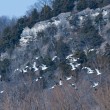
Cape Monroe (County), on the southwest coast of Illinois, is a renowned haven for wildlife. The reasons are simple: location and habitats. A bird’s-eye-view of the landscape helps to explain our county’s attraction for wildlife. The Mississippi River flyway, and associated riparian wildlife corridor, is the longest migration route in the Western Hemisphere, running […]
Something to Hoot About: Owls

Owls enjoy our special fascination. Perhaps it’s because they are a caricature of us: with upright, sometimes cuddly-looking, vertical posture, big, cheeky and expressive faces with large, emotive eyes, and cute little ears. But they really are the bird version of a wolf in sheep’s clothing: like a cat with wings, they are skillful […]
Bluff Lands Corridor Vital to Wildlife as Climate Warms
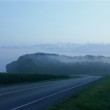
A recent report, commissioned by the Illinois Department of Natural Resources, makes the strongest case yet of the crucial importance of our Mississippi River bluff corridor for the long-term vitality of wildlife in the state. The Illinois Chapter of The Nature Conservancy’s May 2011 report —Adapting Conservation to a Changing Climate: An Update to the […]
Biological Treasure Hunt and Festival at Salt Lick Point Land & Water Reserve
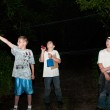
Former Secretary of Defense Donald Rumsfeld occasionally rhapsodized to the press about varieties of “known knowns, known unknowns, and unknown unknowns.” The mystery and challenges of discovery – the ability to transfer the unknown into the column marked known – is a continual stimulus. That urge to know brought 52 scientists and naturalists to Valmeyer’s […]
Biological Diversity Serves Us!
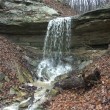
Our Mississippi River bluff land corridor is one of the most diverse natural areas in Illinois. The corridor constitutes its own ecosystem– the Northern Ozark Natural Division– and stands on its own singular geologic formation — the Salem Plateau– both science-based measures of the region’s uniqueness in the state. An ecosystem is simply the sum […]
The Unique Nature, Wildlife, and Habitats of Our Bluff Lands
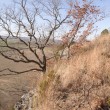
Dennis Knobloch, Vice President, Clifftop I grew up in the dawn’s long shadows of the bluff line. I have watched a lifetime of sunsets illuminating the cliff face — like a limestone necklace, jewelling the landscape of Valmeyer. My German ancestors spoke legions about the bluff lands’ magic and bounty; they spoke with that old […]
A Gathering of Eagles
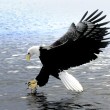
The bottoms are abuzz with reports of large concentrations of Bald Eagles along Levee Road. Nothing seems to capture the imagination and excitement of Monroe Countians like a gathering of eagles. 2010 was a remarkable year for eagle watchers in our area and the numbers seen so far this year indicate that 2011 may be […]
It’s the Berries! Bluff Lands’ Critters Depend on ‘Em
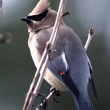
Now that cold winter has gripped our bluff lands, many natural sources of animal wildlife foodstuffs are becoming depleted. While “hard mast” oak acorns and hickory nuts strew our forest floor, they will begin to decompose in the winter’s duff. Our grasses and forbs, both important animal food sources, have died back. Crops, which help […]
Itchy, Scratchy, Stingy? Or Soothing, Snackable?
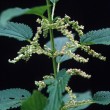
One causes an immediate “ouch, that hurts!” while the other may take days to elicit a similar response. Both are attractive, almost begging a touch. And, both may be encountered throughout our rich wooded bluff lands, particularly in moist soils along creeks, ravines, and shaded slopes. Canada nettle (Laportea canadensis), also called “wood nettle” or […]
Landscape as Humanscape: Guardians and Caretakers?
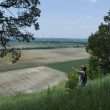
In the past 300 years, people have transformed Monroe County’s landscape. In pre-European settlement times, 86% of Monroe County’s 255,000 acres was forested, including portions of the American Bottoms and most of the uplands. There were approximately 13,000 acres of prairie — five percent of county lands — with a large swathe of tall grass […]
